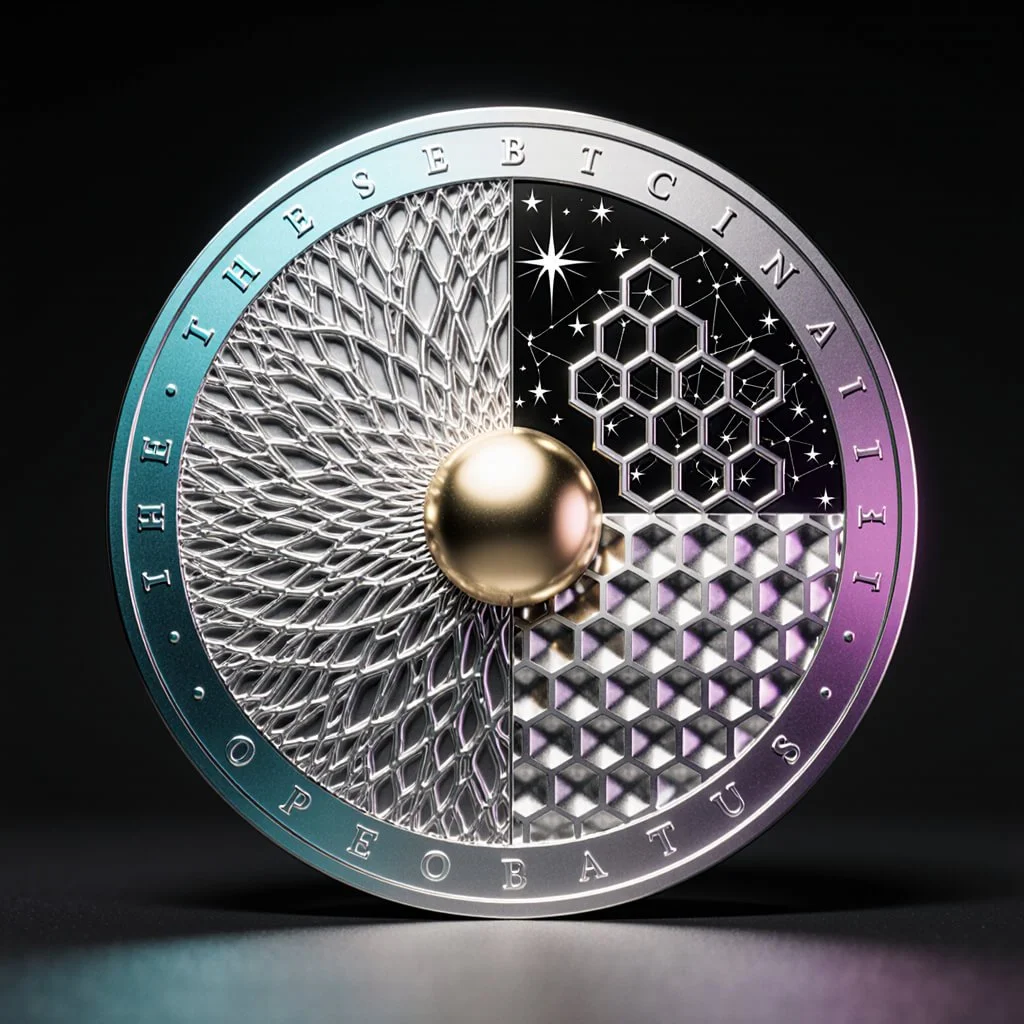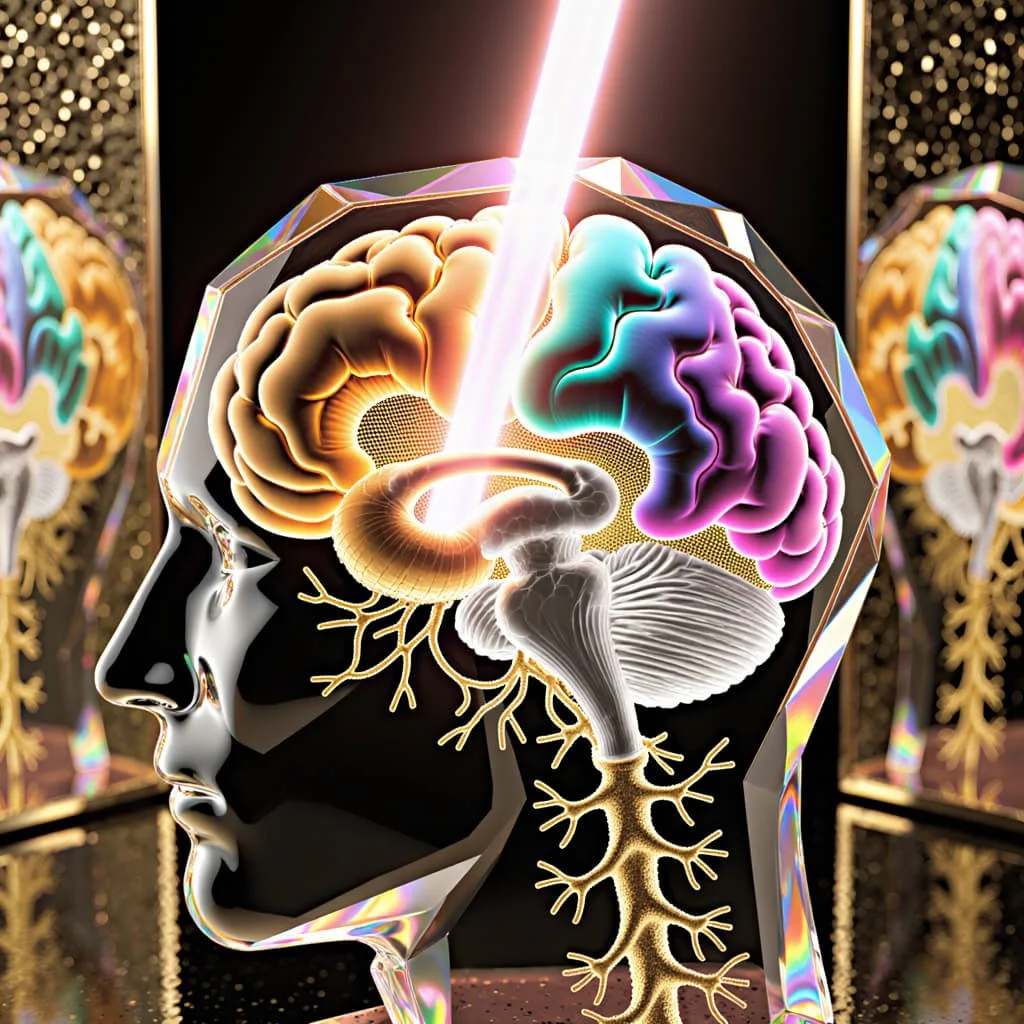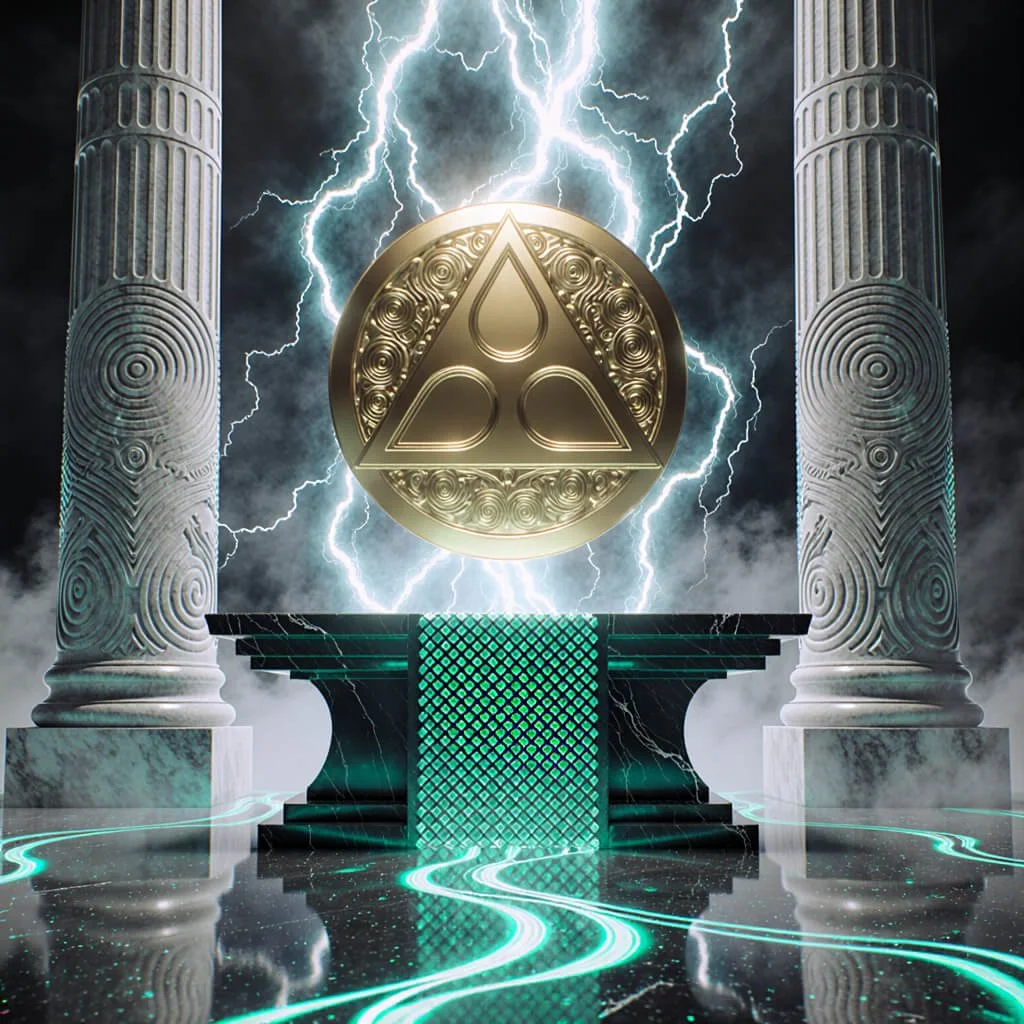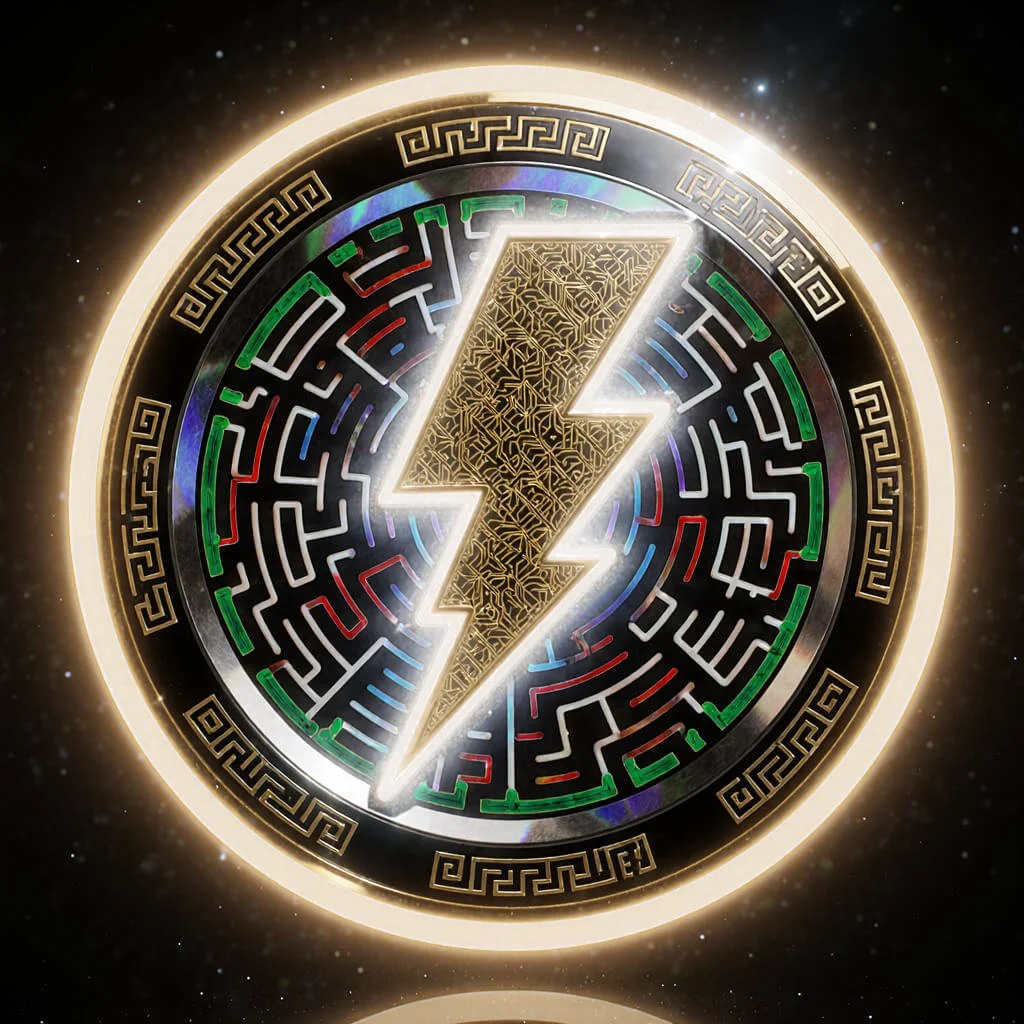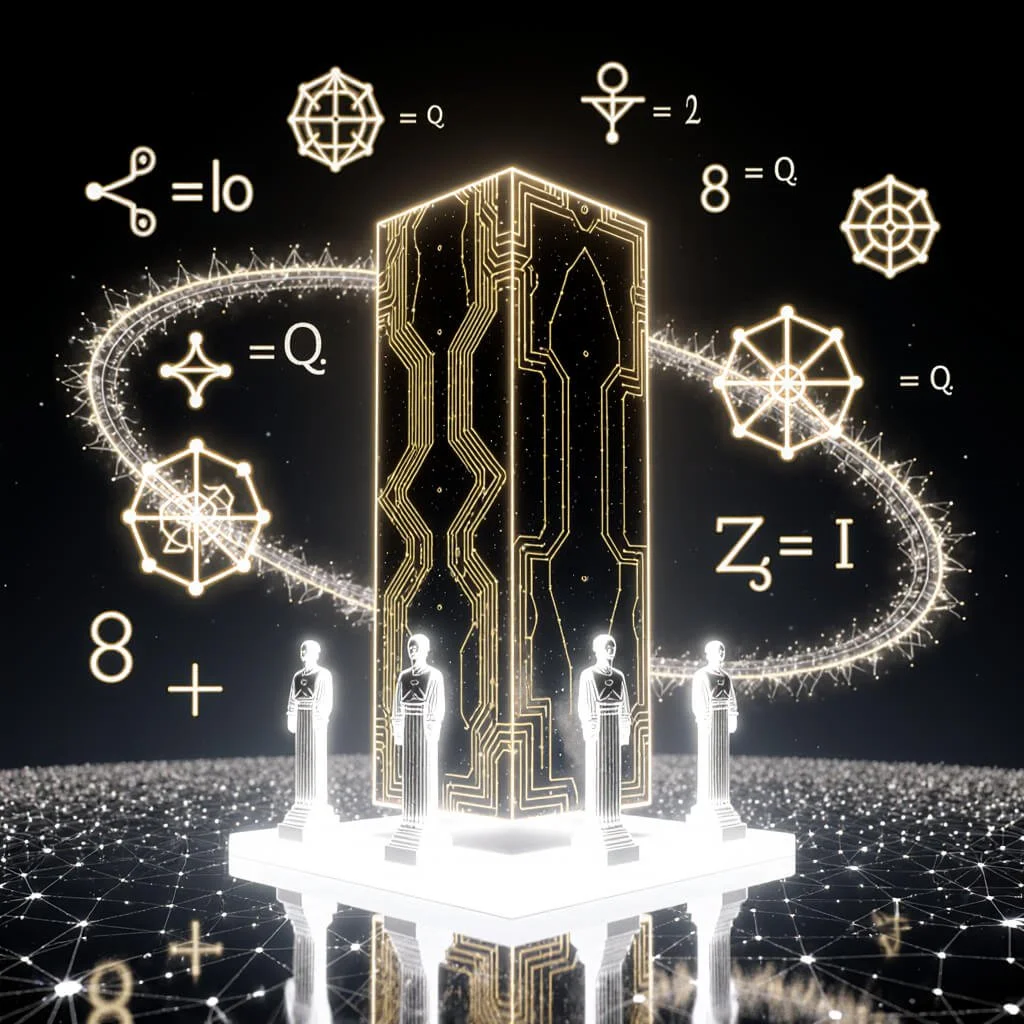Quantum Advantage 2024: Quantum-Classical Computing Renaissance
The Quantum Advantage Blueprint: Charting the Path Forward in the Quantum-Classical Computing Renaissance
Quantum Advantage 2024: Quantum-Classical Computing Renaissance
Key Takeaways:
Quantum computing progress continues amid hardware restrictions, stretching capabilities via algorithms.
Classical computing retains strong position with ever-advancing algorithms and specialized hardware.
Blurring lines across quantum and classical - entering era of "quantum-ready" classical systems.
Rather than quantum vs. classical race, we see interplay and co-elevation of both spheres.
Cross-pollination of ideas now occurring across quantum and classical frontiers.
Hybrid quantum-classical systems becoming prevalent as combining strengths yields gains.
Partnership, synergy, co-design now essential to unlock potential across computing modalities.
Visions of the Quantum Vortex, Surreal Visionary Vapor Dream
The quest for "quantum advantage" - demonstrable evidence of quantum computers outperforming even the most powerful classical supercomputers at meaningful tasks - has accelerated tremendously in recent years. Major strides in quantum hardware, software, and algorithms from industry leaders and research pioneers have brought forth bold proclamations of reaching this elusive goal. However, the goalposts keep shifting as classical computing also continues rapid advancement. This fluid landscape demands a thoughtful analysis of the synergies emerging across quantum and classical paradigms to chart the most promising path forward.
By revisiting the original formulation of the quantum advantage blueprint and surveying the latest developments in both computing spheres, this article explores critical insights, limitations, and opportunities to map out an updated roadmap. Rather than a simplistic quantum versus classical race, we appear to have entered an era of "co-elevation" with breakthroughs in one sphere inspiring new directions in the other. Harnessing these positive feedback loops through greater collaboration and cross-pollination of ideas is key as we transit into the emerging quantum-classical computing renaissance.
2024 Quantum Advantage Blueprint: Unlocking the True Potential of the Crystalline Core
Revisiting the Quantum Advantage Blueprint
The initial quantum advantage blueprint rested on a concrete definition offered by IBM - “quantum utility” as evidence of a quantum computer accurately solving a problem intractable for an exact classical algorithm [1]. In mid-2023, IBM provided data from their 127-qubit “Eagle” processor outperforming classical simulation of a multi-spin system, claiming the first demonstration of quantum utility [2].
This ignited debate over whether equivalent classical approximations could match this accuracy, a conversation now occurring routinely as claims of quantum milestones emerge. The latest volley comes from scientists at the Flatiron Institute applying “tensor network” methods on a classical computer to solve the same spin problem with higher precision than the Eagle quantum processor [3].
These back-and-forth benchmarking battles, while healthy academic exercises, miss the forest for the trees if they distract from meaningful co-development of both computing platforms. They also generally use narrowly defined performance metrics that fail to capture holisticadvancement across hardware, software, algorithms, and applications. As we seek more insightful quantum advantage goalposts, it is vital to analyze the distinct yet complementary growth trajectories for quantum and classical computing.
Dream Salon 2088 x Crystal Cult Presents: Into the Hypnogogic Dream Universe
Quantum Computing - Leaps Amid Limitations
Quantum computing promises exponential scale-up over classical systems by encoding information as quantum bits (qubits) that can represent multiple states and become “entangled” across vast configurations. With major investments from Amazon, Google, IBM, Intel, Microsoft and scores of startups, impressive hardware advances have occurred on multiple qubit modalities - superconducting, trapped ion, photonics, etc. IBM recently unveiled their 433-qubit “Osprey” processor, although noise and error rates remain high [4]. Smaller qubit counts are offset by superior fidelities from other platforms like IonQ’s 11-qubit system [5].
Besides raw qubit count and error profiles, finer-grained metrics like quantum volume track algorithmic complexity [6], while new benchmarking suites test hardware efficiencies on key quantum algorithms [7]. As devices scale up, fierce competition is driving rapid iteration across these metrics. However, serious roadblocks remain in error correction, fidelity decay from noise, qubit connectivity, and hardware instabilities hampering computational power today. Quantum advantage likely necessitates millions of logical qubits with negligible error rates, still distant milestones [8].
Closing this daunting hardware gap demands breakthrough algorithmic innovations maximizing existing quantum resources. Hybrid quantum-classical schemes lower qubit requirements by offloading portions of calculations to classical hardware [9]. Error mitigation techniques extrapolate noisy results to higher fidelities [10]. Alternative encoding mechanisms like boson sampling circumvent full fault tolerance [11], with recent large-scale demonstrations on this front [12]. Advances in quantum machine learning also offer new potential application domains [13].
While hardware restrictions currently limit demonstrated quantum advantage, researchers are stretching capabilities through clever algorithms and architectures. Still, digitization costs of input/output data and intense classical processing needs could constrain quantum boosts [14]. Holistic co-design of quantum-classical systems and judicious division of labor is critical going forward.
Awakening of the Super Galactic Intelligence
Classical Computing - Ever-Improving Algorithms
Rather than awaiting maturation of quantum hardware, significant effort has focused on stretching classical computing to new frontiers. Researchers have developed complex statistical approximations, topological analysis, tensor networks, and other simulation techniques to solve small instances of quantum computational problems without exotic hardware [15]. Cloud-based supercomputers also enable massively parallel processing, with custom accelerators tailored to intensive quantum-inspired algorithms [16].
Classical machine learning has become ubiquitous for myriad pattern recognition, predictive modeling and decision support applications. While current machine learning is limited as problems scale in complexity, active research on next-generation architectures aims to push boundaries [17]. Natural language processing models like ChatGPT hint at coming exponential gains in symbolic reasoning - still lacking in quantum methods. Creative combinations of mathematical modeling, statistical learning, and knowledge representation on classical hardware open new vistas [18].
Classical computing thus maintains a strong and ever-advancing position rather than awaiting an imminent quantum eclipse. Hybrid deployment of specialized classical hardware and software will likely play a key role in extracting maximum utility from quantum computers as they come online. Rather than a polarized quantum/classical divide, we are entering an era of “quantum-ready” classical computing - designed to interoperate fluidly with quantum co-processors once applicable.
Total Eclipse of the Quantum Heart, Visionary Surrealism
The Quantum-Classical Computing Renaissance
Given massive investments in quantum technology alongside unrelenting classical computing progress, neither trajectory shows signs of slowing. Rather than taking sides in a counterproductive “battle”, we must catalyze synergies between both spheres.
Creative interdisciplinary collaboration will be key as researcher communities coalesce around co-design of quantum and classical systems. For instance, quantum error correction schemes benefit from cross-pollination with classical coding theory [19]. Classical machine learning helps calibrate controls on noisy quantum hardware to optimize performance [20]. Running hybrid algorithms effectively requires tight integration of software infrastructure and development tools across system boundaries [21].
Applications driving this quantum-classical renaissance also encourage interdependence. Quantum advances in physics simulation, chemistry/materials, and machine learning are all fueled by partnerships with domain classical software and users [22]. Performance benchmarking and testing methodologies likewise need joint design across computing modalities [23]. Cloud-based co-processors underpinning “Quantum Computing as a Service” necessitate unified hybrid system architectures rather than piecemeal net-new quantum toolkits [24].
As quantum hardware, algorithms and applications continue maturing, we must avoid artificially siloed development tracks. The past few years make abundantly clear - quantum advantage will demand extensive classical computing progress alongside quantum leaps. Hybrid quantum-classical co-elevation indeed represents the most navigable terrain moving forward, with each sphere fueling ideas in the other. Keeping partnership, synergy and co-creation at the core is essential to deliver on the mammoth potential of the unfolding quantum-classical computing renaissance.
Quantum-Classical Computing Renaissance: A Digital Vapor Dream
Conclusion
This updated blueprint reframes the quantum advantage debate as a collaborative quest alongside classical computing, rather than a simplistic horse race to an ephemeral finish line. The quantum computing field certainly holds unique promised based on the exponential scale-up qubit technologies could theoretically enable. However, the immense scientific and engineering challenges still facing practical large-scale quantum computation necessitate a balanced perspective.
Rather than classical computing conceding defeat in any particular timeframe, the past few years have seen an acceleration of new methods stretching conventional architectures ever-further. As breakthroughs continue on both fronts, we are entering a quantum-classical computing renaissance with each sphere fueling ideas in the other through creative synergies. Hybrid partnerships combining strengths of diverse modalities will pave the most productive path ahead.
With innovation advancing at a breathtaking pace across quantum and classical paradigms, this renaissance offers an incredibly exciting time for computer scientists and researchers across scientific domains. The quantum advantage conversation must focus less on “when” one sphere surpasses another, but rather on nurturing positive feedback loops across the quantum-classical frontier.
Creative interdisciplinary collaboration, co-design and hybrid developmental strategies now take center stage. Harnessing these collaborative drivers and emphasizing synergistic systems thinking is the best way forward to build a thriving collaborative ecosystem. One that jointly overcomes limitations and catalyzes discovery across the fantastic potential of this quantum-classical computing renaissance.
Surreal Vistas from the Ethereal Cloud Palace
References
IBM Research Blog. “Quantum Computing at IBM: Utility and Beyond”. https://research.ibm.com/blog/quantum-utility
Kim et al,. “Evidence for quantum computing benefit before fault-tolerance”. Nature. 2023.
Tindall et al,. “Efficient tensor network simulation of IBM’s Eagle quantum processor”. PRX Quantum. 2024.
IBM. “Introducing IBM Quantum System Two”. 2023.
IonQ Investor Presentation. 2023.
Cross et al,. “Validating quantum computers using randomized model circuits”. PRX Quantum. 2021.
Mattmüller et al. “Benchmarking a quantum computer at the push of a button”. PRX Quantum. 2023
Bharti et al. “Noisy intermediate-scale quantum algorithms without error correction”. PRX Quantum. 2022.
Endo et al. “Hybrid quantum-classical algorithms and quantum error mitigation”. J. Phys. Soc. Japan. 2021.
Zhong et al. “Quantum computational advantage using photons”. Science. 2020.
Zhong et al. “Computational advantage from orchestrated photon loss”. PRX Quantum. 2023.
Perez-Salinas et al. “Data re-uploading for a universal quantum classifier”. PRX Quantum. 2020.
Liu et al. “Resource requirements for quantum computational advantage”. PRX Quantum. 2023.
Mezzacapo et al. “Quantum simulator for transport phenomena in fluid flows”. Sci Rep. 2015.
Sato et al. “Large-scale simulation of quantum error correction on a supercomputer”. Nature. 2022.
Strubell et al. “Energy and policy considerations for modern deep learning research”. AI Mag. 2019.
Marcus et al. “Beyond backpropagation: Using cognitive architectures for next-generation neural nets”. AAAS Meeting. 2023.
Poulin et al. “Fast decoders for topological quantum codes”. Phys Rev A. 2010.
Fosel et al. “Quantum error mitigation with neural networks”. PRX Quantum. 2023
McCaskey et al. “Extending existing quantum software to emerging hardware”. PRX Quantum. 2022.
IBM Quantum Community. “Quantum Startup Ecosystem Report”. 2023.
Bouland et al. “Prospects and challenges of quantum finance”. Cornell Univ. 2022.
Rigetti. “Quantum Cloud Services for Business”. 2023.
Crystal Visions of the Vapor Dream Paradise







